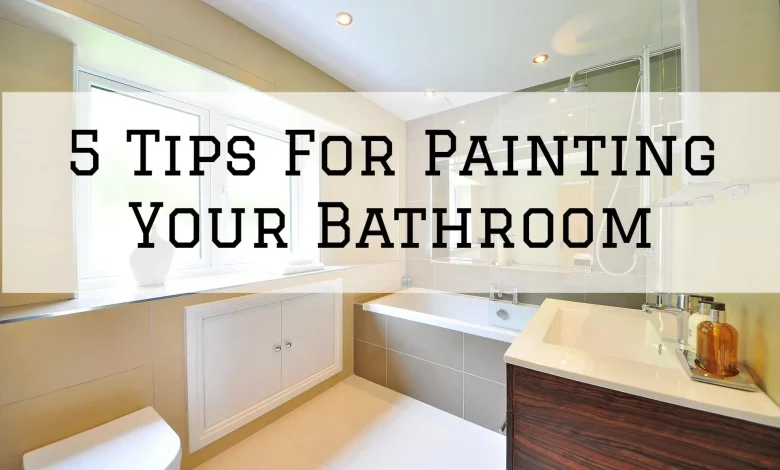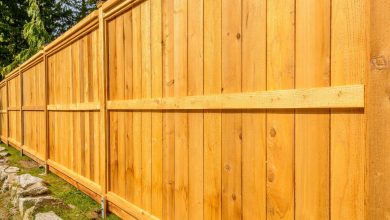Essential Tips for Painting a Bathroom

There are plenty of blog posts and tips on how to paint living rooms or exterior surfaces online. But there’s one space that doesn’t get quite as much attention. And it’s a shame since it’s rather tricky to get it right in this particular place. We’re talking about the bathroom. There’s probably a good reason for it. Most of us have at some point decided to paint a living room – it’s not an unfamiliar project to a vast majority of DIYers. It’s not that hard, you don’t need to have a lot of experience to do a pretty good job. The room can look good enough, even if it’s far from perfect for a trained eye of a professional. The payoff is just great.
Bathrooms, on the other hand, are much smaller with more nooks and crannies – and these are the worst part of painting. They’re also the most difficult one. The problems don’t end there. A bathroom is also a very specific space with a purpose like no other room around the house. They get quite heavy use and water exposure. That’s why waterproofing is one of the things you need to consider. But let’s not get ahead of ourselves. The process is actually similar – with a few twists.
Table of Contents
The Right Paint
This is the foundation of any painting-related project – we know it. But with bathrooms, it’s even more important. Of course, style matters, but it’s mostly personal, so we’ll leave picking the perfect colour to you. But bear in mind there are far more relevant things at play here. You’re not going to escape from the water – doesn’t matter how careful you are or how much you’re trying to avoid it That means one thing – mould hazard. The answer to this issue is either waterproof paint or specialised bathroom paint. Obviously, it’s designed to create a protective layer of coat to shield the surface against water or moisture. Bathroom paints contain mould-inhibiting agents with high solid content – both are there to provide better resistance to moisture and protect the surface. At the very least, pick a more expensive paint from a renowned brand. High-gloss types do a better job in spaces like this because they offer a durable finish and they’re easy to clean. The only issue is they highlight any imperfections, so if your surfaces have a lot of them, you might be better off with an eggshell finish – especially for ceiling paint. There’s one exception here – drywall. A glossy finish isn’t suitable in this case, so we should once again stick to eggshell. If you have any wooden accents, like a feature wall, then remember to also use wood stain or a similar solution to waterproof these places as well – wood doesn’t do that well with moisture.
Time to Clean Up
You must have heard about the importance of surface preparation. No surprises here, bathrooms are no exception. But you have to be even more diligent. In other rooms around the house, you can pretty much get away without thoroughly cleaning all the walls – in a bathroom, absolutely not. There’s more potential for dirt or build-up of a different nature here. That can cause a number of issues. Normally, we clean the surface for better adhesion, but in bathrooms, paint tends to have a much harder time sticking to the surface. That’s why you might need TSP or at least some soap.
Get it Out of the Way
Ideally, a room should be empty before our painting project even starts. It’s always a hassle, but in a bathroom – it may seem like an impossible task. In case you’re wondering what you’re supposed to do with the toilet tank, here it goes. You should remove it as well. You think that’s hard? Well, try painting around it… It’s nearly impossible to get the right colour behind the toilet tank – there’s just not enough space. You’ll find it so much easier to just take the whole thing apart and then get to painting. It’s probably the only way to do a good job. Otherwise, you’re stuck with meticulously applying painter’s tape and trying to figure out which brush is small enough to fit there. Plus, it’s not even that hard, contrary to popular belief. Most toilets have two parts – the top tank and the base, also known as the bowl. The latter is the messy one – but you don’t even have to touch it. Just turn off the water supply, flush the toilet once and take the towel tank off. You should also prepare some old towels to catch any spills. And that’s it, you’re done. Of course, there are more things in the bathroom. If it’s possible or they’re quite easy to carry out – do it. All the mirrors, towel racks, maybe hangers, switches. You don’t want them there for the time being. Everything else is going to need some protection, so use drop sheets or film to make sure everything stays clean.
Get your Brushes Ready
Finally, it’s time to get down to business. Gather the right tools; make sure you have at least one good paint roller to quickly cover larger areas, one quality brush and one specialised sash brush (preferably a 2-inch model) for cutting in. Remember to use painter’s tape for better precision and straight lines. As for the painting process, it’s important to apply an adequate amount of paint and do your best to keep things even. Too much paint and it’s going to start dripping. Too little, and you’re not going to see the colour. That’s especially important when you’re painting over a different colour (which is not really recommended) and how dark that colour is. Of course, deep green is going to be a bigger challenge than beige. Let the paint dry properly – in this case, just refer to the manufacturer’s recommendations. The last thing is to apply the second coat.
More Cleaning
Now it’s finally time to get rid of all the sheets, film and painter’s tape. Put all the things back where they belong and enjoy your brand-new bathroom. Don’t forget to pat yourself on the back for the job well done!




